From Spring’s first blush to the warmth of summer, California’s array of trees with pink blossoms offers an ever-changing spectacle of color and charm.
As a Californian resident, I can attest there’s no better way to appreciate the Golden State’s botanical diversity than exploring these trees in their natural habitats.
Each one adds its unique brushstroke to the California landscape, enhancing our connection with nature and adding an extra dash of beauty to our daily lives.
Trees With Pink Flowers California
- Flowering Dogwood (Cornus florida)
- Western Redbud (Cercis occidentalis)
- California Buckeye (Aesculus californica)
- Red Ironbark (Eucalyptus sideroxylon)
Flowering Dogwood (Cornus florida)
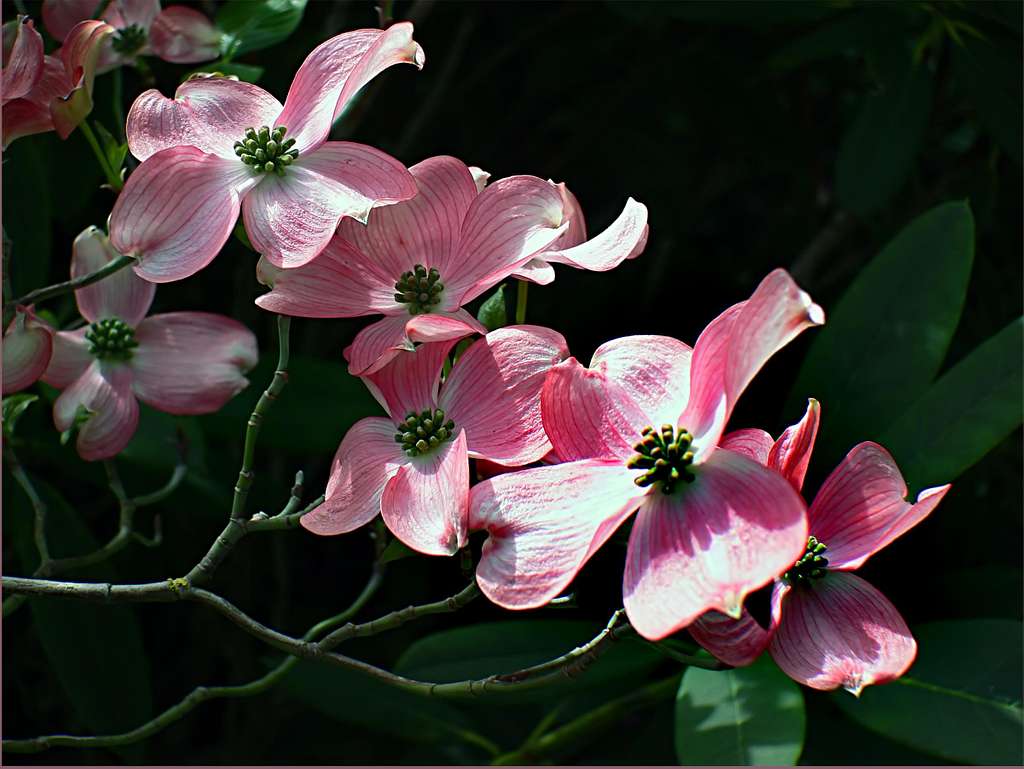
Even though it’s native to the eastern United States, it thrives in Northern California, adding a vibrant pink brushstroke to the green canvas of the Golden State.
The Flowering Dogwood, in full bloom, is a sight to behold with its bright pink flowers.
Interestingly, the pink “petals” we see are not true flowers, but bracts, or specialized leaves.
The actual flowers are yellowish-green clusters in the center.
These delicate beauties bloom from April to May, signaling the arrival of Spring.
The tree grows to about 15-30 feet and possesses a layered branching structure, giving it a rounded and compact appearance. T
he bark is rough and resembles that of a puzzle, making it an interesting aesthetic feature throughout the year.
Western Redbud (Cercis occidentalis)
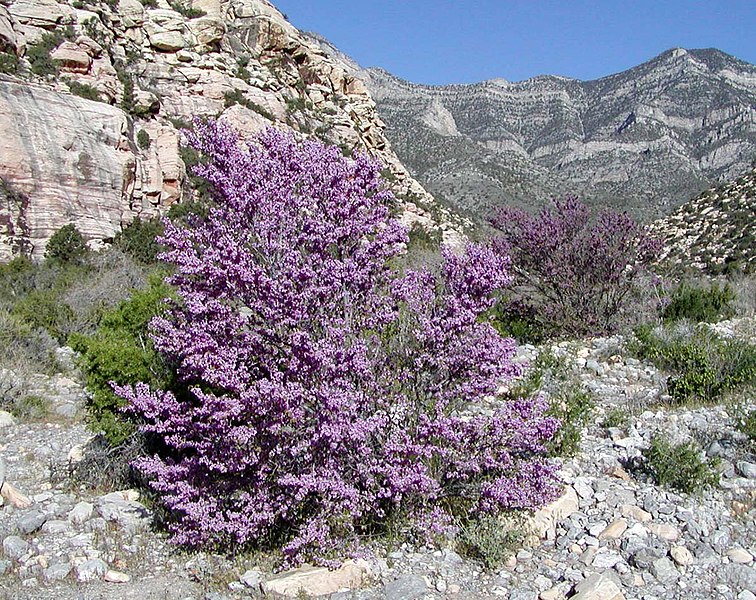
The Western Redbud – a quintessential California native, is a botanical gem of the West Coast.
You’ll find this small, elegant tree dotted throughout the California foothills, valleys, and chaparrals.
In Spring, the Western Redbud is awash with pink to magenta pea-like flowers, blossoming directly on its branches and trunk, a phenomenon known as ‘cauliflory’.
This spectacle often lasts from February to May, creating a delightful, early display of color.
Growing up to 15 feet tall, it possesses a charming multi-trunk habit.
The heart-shaped leaves that follow the blossoms, transition from a rich green to yellow in fall, ensuring year-round interest.
California Buckeye (Aesculus californica)
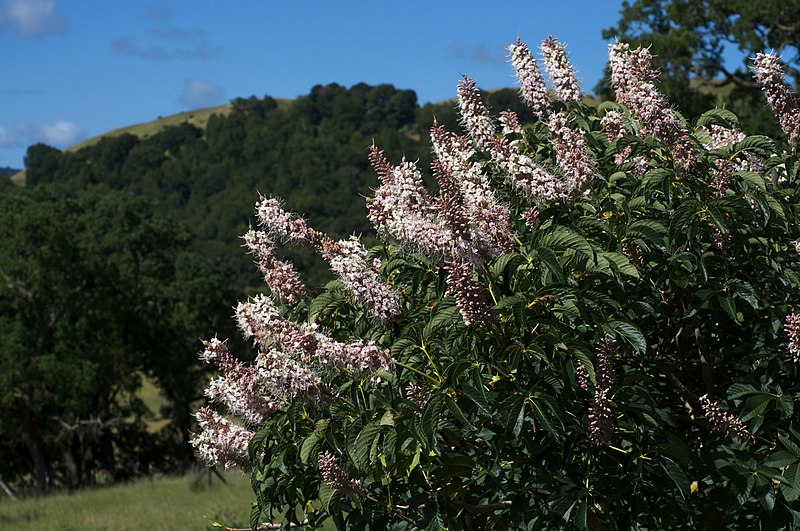
The California Buckeye, a true Golden State native, thrives from the lush valleys of Central California to the chaparral areas of Southern California.
It’s a tree of resilience and beauty, capable of withstanding the region’s dry summers.
The Buckeye boasts tall, spire-like clusters of delicate pink flowers from April through July.
These flower clusters, or ‘panicles’, can be over a foot long, filling the air with a unique, sweet fragrance and attracting a plethora of pollinators.
This tree, which can grow up to 20 feet, has an expansive round canopy that provides plenty of shade.
Its leaves are palmately compound, meaning they resemble a hand with outstretched fingers.
An interesting fact about the California Buckeye: in summer, it drops its leaves to conserve water, revealing smooth, gray bark and large seed pods that add another layer of interest.
Red Ironbark (Eucalyptus sideroxylon)
The Red Ironbark, a transplant from Australia, has found a welcoming home in Southern California’s climate.
This tall, robust tree can be found in urban landscapes and park settings throughout the region.
Bursting into bloom between winter and spring, the Red Ironbark features tiny pink flowers, clustered together in a charming, fuzzy pom-pom shape.
They serve as an important nectar source for local bees and other wildlife.
The tree gets its name from the deeply furrowed, iron-tough bark that graces the base, exhibiting a stunning dark red to black hue.
It’s a towering spectacle, growing up to 80 feet tall, and providing ample shade with its dense canopy of narrow, lance-shaped leaves.
It’s not only the pink blossoms that make the Red Ironbark a standout; its wood is highly valued for its durability and resistance to decay, often used in construction, flooring, and even for making wine barrels.
Pink Trumpet Tree (Handroanthus impetiginosus)
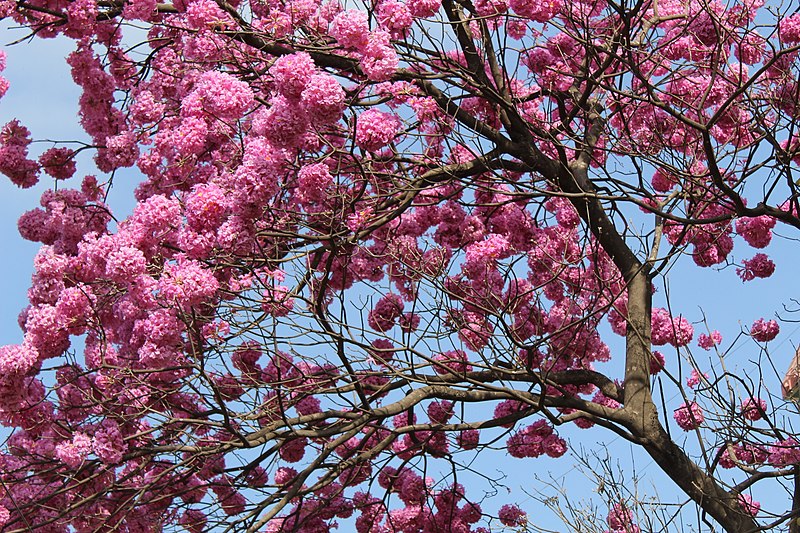
The Pink Trumpet Tree, hailing from South America, has adapted well to the Mediterranean climate of Southern California.
This stunning tree is commonly found gracing urban parks and lining residential streets due to its ornamental appeal.
Blossoming usually in late winter or early spring, the Pink Trumpet Tree erupts into a grand spectacle of vibrant pink, trumpet-shaped flowers.
These clusters of flowers often cover the entire tree, creating a fantastic sight against the often still bare surroundings.
The tree can reach up to 50 feet in height, boasting an umbrella-like canopy.
It features semi-evergreen, palmately compound leaves which add a unique texture to California’s diverse flora.
Orchid Tree (Bauhinia variegata)

The Orchid Tree, another foreign beauty, originates from India and Southeast Asia but has found its place in the warmer regions of California, from Los Angeles to San Diego.
This tree flaunts its stunning pink, orchid-like flowers from late winter through early spring.
Each blossom showcases five free petals, adding to its orchid resemblance and giving a tropical flair to Californian landscapes.
It grows to about 20 to 30 feet tall, with a spreading, dome-shaped canopy that provides lovely shade.
The distinct twin-lobed leaves, which resemble a cow’s hoof, make this tree easily recognizable even when it’s not in bloom.
Eastern Redbud (Cercis canadensis)
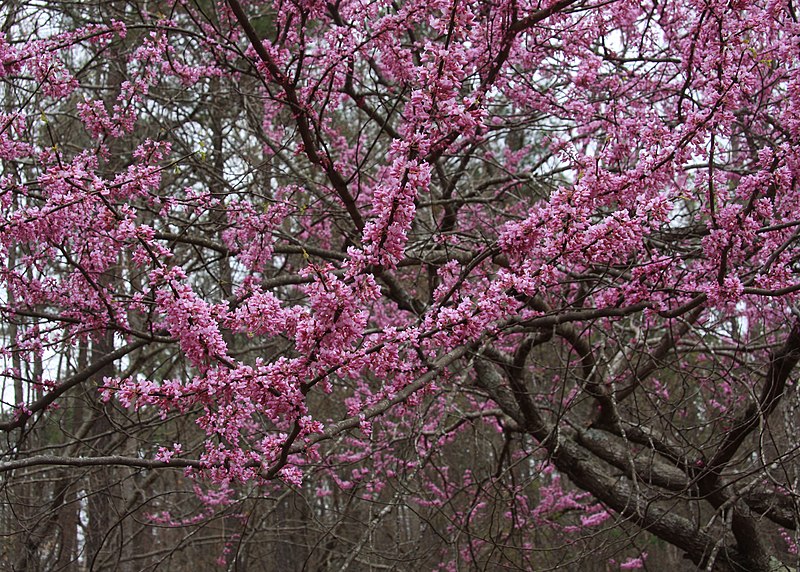
Though native to the eastern United States, the Eastern Redbud thrives in various parts of California, both as a landscape tree and a naturalized specimen.
Its display of rosy pink flowers bursts forth in early spring, even before the leaves unfurl.
These small, sweet pea-like blossoms grow tightly against the branches and trunk, creating a dramatic floral display.
This tree typically grows to 20-30 feet, presenting a rounded canopy.
The heart-shaped leaves, similar to its western cousin, turn from a summer green to a lovely yellow in the fall, offering multi-season interest.
One unique aspect of the Eastern Redbud is its propensity to occasionally grow clusters of miniature leaves – a curiosity termed “witch’s broom.”
Related guides:
